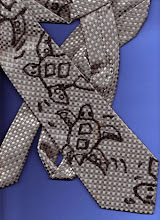
The other day one of my co-workers remarked to a couple of our friends that
“Janelle writes children’s books.” The customary “Ooh, isn’t that wonderful…”comments were exchanged – the ones that mean they think I write stuff like Winnie the Pooh and Babar the Elephant -- stories for elementary school kids.
Trying to explain that I generally write for “young adults (YA),” would have made the conversation too long. So I listened and nodded, and smiled a little when someone said “it’s so great that you can still write (upbeat) stuff like that in this day and age when there are so many people who are so jaded.”
At that point in the conversation I figured it would probably shake things up too much to mention that the manuscript I have out circulating involves a lot of family conflict and a 300 year old `murder’ mystery, and that the story I’m currently writing has a narrator who’s a homeless teen. : ) But YA literature can show the reality of life with a little less sunshine than what the younger kids read.
So what can we write about in YA, anyway?
David Gill, author of the YA book Soul Enchilada, answered this question at the recent SCBWI Carolinas Annual Fall Conference. Here is his list of what can be found in a YA book:
“YA,” he said, “is not a genre, it’s a marketing category.”
YA books have a teen story-problem and a teen main character.
They are written for a teen audience.
They are told in a `here and now’ (teen) perspective, rather than with a narrator who is an adult looking back.
In YA the story “starts with the action and story, and ends with the action and story.”
YA is “reaching for college readers, becoming more truly young adult, and allowing more complex and darker themes, lately. Some YA books are also getting longer, and the themes and writing more complex.
David also quoted Scholastic Editor Cheryl Klein as noting that YA stories are “centrally interested in the experiences and growth of the book’s teen protagonist.”
So what is the difference between Middle Grade books (written for kids between approximately the ages of 9 and 14 years of age,) and YA? In a word, David said, it’s "intensity.”
He gave the following examples:
MG book = a character may sneak a kiss
YA book = a character might have sex or even get pregnant
MG book = bullies may push, pull or perhaps call names
YA book = Bullies can beat you up
You get the idea. And whatever age you’re writing for, remember: “your main character should be roughly 2 years older than your target reader’s age.”
Now go forth. And if you’re writing YA it’s ok to let that little jaded sarcastic teen in you write about tough issues. It’s ok to Go All The Way.
“Janelle writes children’s books.” The customary “Ooh, isn’t that wonderful…”comments were exchanged – the ones that mean they think I write stuff like Winnie the Pooh and Babar the Elephant -- stories for elementary school kids.
Trying to explain that I generally write for “young adults (YA),” would have made the conversation too long. So I listened and nodded, and smiled a little when someone said “it’s so great that you can still write (upbeat) stuff like that in this day and age when there are so many people who are so jaded.”
At that point in the conversation I figured it would probably shake things up too much to mention that the manuscript I have out circulating involves a lot of family conflict and a 300 year old `murder’ mystery, and that the story I’m currently writing has a narrator who’s a homeless teen. : ) But YA literature can show the reality of life with a little less sunshine than what the younger kids read.
So what can we write about in YA, anyway?
David Gill, author of the YA book Soul Enchilada, answered this question at the recent SCBWI Carolinas Annual Fall Conference. Here is his list of what can be found in a YA book:
“YA,” he said, “is not a genre, it’s a marketing category.”
YA books have a teen story-problem and a teen main character.
They are written for a teen audience.
They are told in a `here and now’ (teen) perspective, rather than with a narrator who is an adult looking back.
In YA the story “starts with the action and story, and ends with the action and story.”
YA is “reaching for college readers, becoming more truly young adult, and allowing more complex and darker themes, lately. Some YA books are also getting longer, and the themes and writing more complex.
David also quoted Scholastic Editor Cheryl Klein as noting that YA stories are “centrally interested in the experiences and growth of the book’s teen protagonist.”
So what is the difference between Middle Grade books (written for kids between approximately the ages of 9 and 14 years of age,) and YA? In a word, David said, it’s "intensity.”
He gave the following examples:
MG book = a character may sneak a kiss
YA book = a character might have sex or even get pregnant
MG book = bullies may push, pull or perhaps call names
YA book = Bullies can beat you up
You get the idea. And whatever age you’re writing for, remember: “your main character should be roughly 2 years older than your target reader’s age.”
Now go forth. And if you’re writing YA it’s ok to let that little jaded sarcastic teen in you write about tough issues. It’s ok to Go All The Way.










